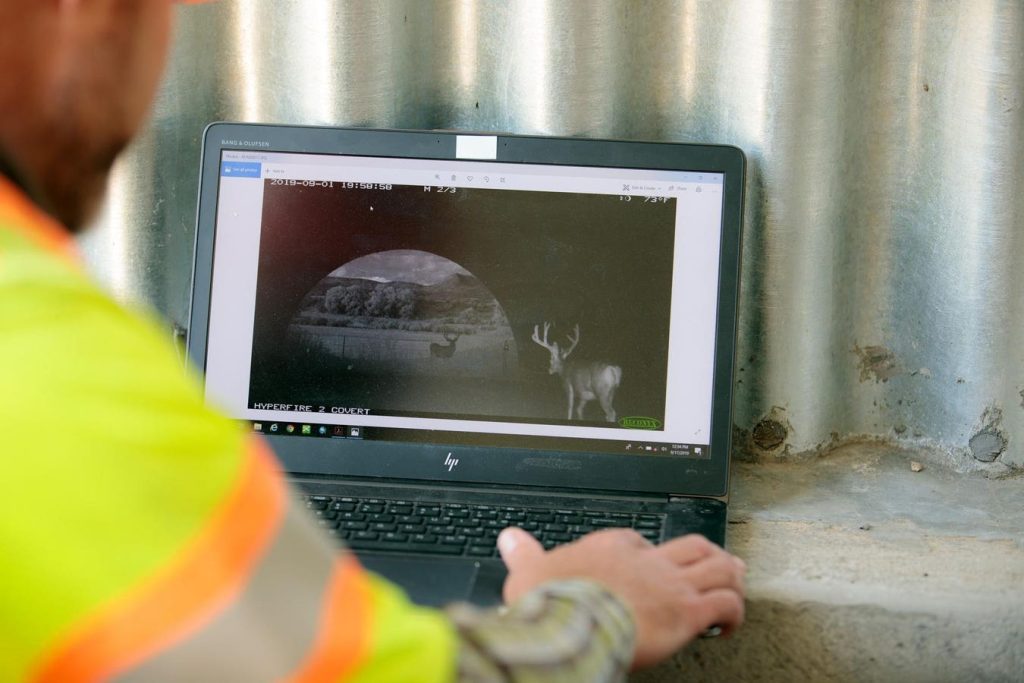As Colorado leaders recently toured a half-way point on building a massive overpass wildlife crossing above Interstate 25, state police were warning drivers about the dangers of crashing into animals after two recent fatalities.
U.S. Sen. Michael Bennet (D) joined with state officials recently to see what is billed as among the world’s largest wildlife crossing built over a major highway.
Located in Douglas County, the Colorado Department of Transportation is managing the project called the I-25 Greenland Wildlife Overpass. The goal is to reduce wildlife-vehicle collisions with such big game as elk, pronghorn and mule deer by creating a six-lane-wide overpass. The location is where large movements of big game animals occur.
Bennet commented July 25 in a social media post about his visit to the Greenland Wildlife Overpass project: “Colorado continues to be a model for the rest of the Western United States. By building the largest wildlife overpass in the U.S., we are protecting wildlife and keeping Colorado drivers safe.”
The overpass was designed with wide sloped entrances that gradually rise above the highway to appeal to big game. Elk prefer traveling in wide open areas and avoid tunnels and underpasses.
The $15-million wildlife overpass is expected to reduce wildlife/vehicle collisions by 90% on I-25.
After completion slated for December, the structure will compliment an existing I-25 wildlife crossing system of underpasses and fences and connect 39,000 acres of habitat on both sides of the interstate.
Colorado Creates Innovative 18-mile Wildlife Crossing System
The 200-foot-wide, 209-foot-long overpass will link into the state’s current 18-mile wildlife crossing mitigation system called the I-25 South Gap project. This area is between Denver and Colorado Springs.
Before Colorado created its wildlife crossing mitigation system, drivers along that stretch of I-25 crashed into an average of one wild animal per day trying to pass through the highway corridor.
Each day some 87,000 motorists drive on that 18-mile section of I-25 just south of the Denver metropolitan region.
With abundant animals and people living among its mountain areas, Colorado sees about 4,000 wildlife-vehicle crashes yearly that cause $80 million in damages. These accidents also result in injuries and fatalities to people and wildlife.
Wildlife killed include moose, deer, black bears, elk, mountain lions, raccoons, hawks, coyotes, porcupines, red foxes, bobcats, owls, rabbits, Canadian geese, beavers and badgers.
Although the new overpass is mainly meant for larger animals it will likely be used by other wildlife as has been the case with Colorado’s wildlife underpasses.
A variety of animals have been seen on cameras using the underpasses, including wild turkeys.
Colorado State Patrol Warns Motorists about Wildlife Collisions
Colorado State Patrol have held a summer public awareness campaign about wildlife-vehicle crashes to deter collisions.
Already this year through July 17, state troopers have responded to 1,600 animal-involved crashes causing property damage in 95% of the accidents. In these collisions, 63 people sustained injuries and two died.
Shortly before midnight on July 11, a driver collided with a moose before three other vehicles hit the animal. One of the drivers lost control of the vehicle and died. Then on July 20 just before 6 a.m., a motorist swerved to avoid crashing into a deer and veered off the road. The vehicle rolled and the driver was fatally injured.
“Drivers in the mountain communities know to expect wildlife, but these animals can show up in more unexpected locations everywhere in our state,” Col. Matthew Packard, state patrol chief, noted in a press statement.
The Colorado State Patrol has determined the third most common factor in all vehicle crashes last year were wildlife collisions. In 2024, troopers investigated 3,573 of these wildlife-vehicle crashes. Statistics showed 96% of those crashes last year resulted in damaged vehicles, while the majority of the injured wildlife died.
“According to the Rocky Mountain Insurance Information Association, the insurance industry pays nearly $1.1 billion yearly in claims for all wildlife collisions nationwide. The average property damage cost of these crashes is estimated at over $3,000,” Colorado State Patrol says.
Tips for Drivers to Avoid Wildlife Collisions
Colorado troopers have listed steps drivers can take to mitigate accidents with wildlife. They suggest motorists:
- Scan roads (or shoulders) for movements and headlights shining on the eyes of nearby animals.
- Use bright lights at night when safe and flash lights at oncoming cars as warnings if you see wildlife along on the roadway.
- Do not honk at wildlife in/near the road.
- Brake if possible if an animal is in front of your vehicle. Then use your hazard lights until the animal moves out of the way.
- If you can’t stop safely, do not swerve.
- Don’t exceed the speed limit because speed increases damage and injury in a crash.
When encountering wildlife while driving on a roadway, police say the most important advice is to maintain control of your vehicle.
Read the full article here










